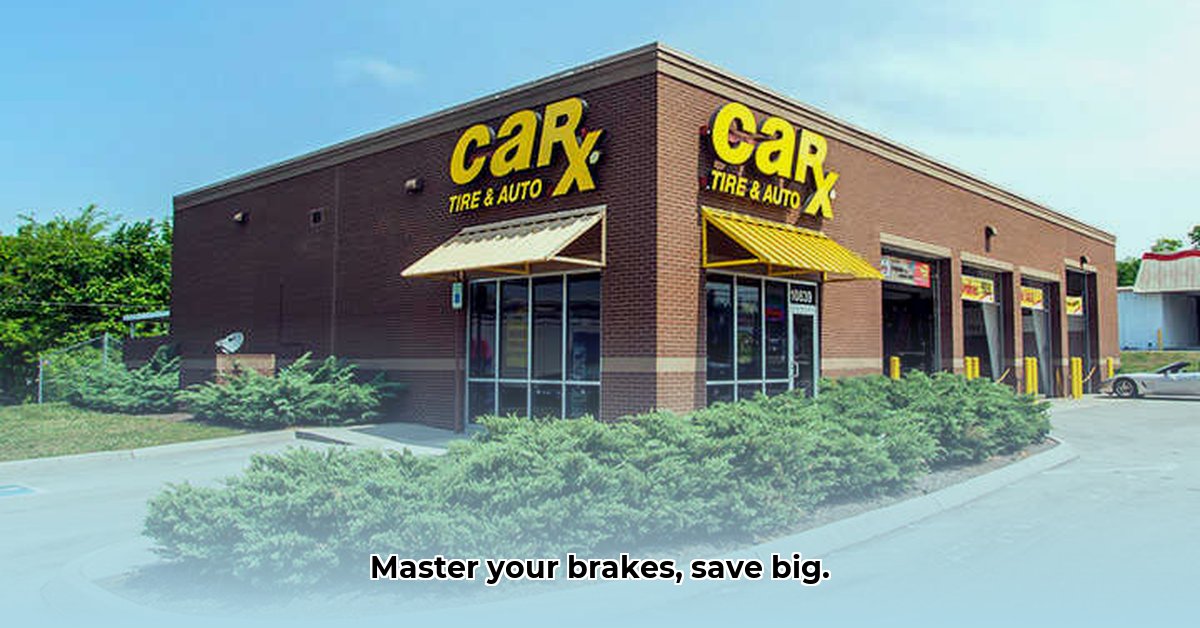
Keeping your car's brakes in top condition is crucial for safety and avoiding expensive repairs. This guide provides actionable steps to understand, maintain, and troubleshoot your braking system, helping you drive with confidence and save money.
Understanding Your Car's Braking System
Your car's braking system is a complex yet essential mechanism. It converts your car's forward motion into heat, bringing it to a stop. Key components include:
- Brake Pads: (The friction material that wears down with use, pressing against the rotors.)
- Rotors (or Drums): (The metal discs or cylinders that the brake pads grip. These can warp from heat.)
- Calipers: (The mechanism that squeezes the brake pads against the rotors, creating friction.)
- Brake Fluid: (The hydraulic fluid that transmits pressure from your pedal to the calipers.)
When you brake, your pedal activates a master cylinder, pushing brake fluid to the calipers. The calipers then squeeze the pads against the rotors, slowing the vehicle. A problem with any part impacts the entire system.
Spotting Trouble: Warning Signs of Brake Issues
Ignoring early warning signs can lead to costly repairs and safety risks. Pay close attention to:
- Unusual Noises: Squealing, grinding, or groaning indicate worn brake pads or other problems. (Think of the unpleasant sound of metal scraping against metal.)
- Vibrations: Vibrations in the brake pedal or steering wheel during braking may indicate warped rotors. (Uneven rotor surfaces create vibrations.)
- Spongy Brake Pedal: A soft or spongy pedal suggests a brake fluid leak or low fluid levels. (This is a serious safety concern.)
- Pulling to One Side: Pulling to one side while braking hints at an imbalance in braking power, possibly due to a caliper issue. (This necessitates immediate attention.)
Preventative Maintenance: A Simple Plan for Safe Brakes
Regular maintenance is key to preventing costly repairs. Follow this schedule:
- Visual Inspections: Every 6,000 miles (or every other oil change), visually inspect your brakes for signs of wear, damage, or leaks. (This quick check can save you significant expense.)
- Brake Pad/Shoe Checks: Check brake pad thickness. Most pads have wear indicators. (Replace pads before they become dangerously thin.)
- Brake Fluid Flushes: Brake fluid absorbs moisture, reducing effectiveness. Consult your owner's manual for flush recommendations. (This preventative step maintains optimal braking performance.)
- Professional Inspections: At least once a year, or if you notice warning signs, have a qualified mechanic perform a thorough inspection. (Professional expertise ensures optimal brake health.)
When to See a Professional: Knowing Your Limits
Some brake issues require professional attention. Contact a mechanic immediately if you experience:
- Soft or spongy brake pedal: (This is a serious safety hazard requiring immediate professional attention.)
- Unusual noises (grinding, squeaking): (These indicate significant wear and potential damage.)
- Excessive vibration while braking: (This could signify warped rotors or other serious issues.)
- Brake fluid leaks: (Leaking brake fluid is a serious safety concern.)
- Pulling to one side when braking: (This points to a potential brake system imbalance.)
Choosing a Reputable Mechanic: Trusting Your Safety
Choosing a reliable mechanic is crucial. Consider these factors:
- Certifications: Look for certifications from reputable organizations. (This signifies the mechanic's expertise and training.)
- Reviews and Reputation: Check online reviews and ask for recommendations. (Word-of-mouth referrals often provide the most accurate insight.)
- Transparency and Communication: A good mechanic will clearly explain issues and answer your questions. (Transparency and clear communication build trust.)
The Importance of Quality Parts: Invest in Safety
While inexpensive parts may tempt you, quality brake components are essential for your safety. Using inferior parts can lead to reduced braking performance and more frequent repairs, potentially costing more in the long run. (Prioritize safety and choose high-quality parts.)
Conclusion: Proactive Maintenance for Peace of Mind
Regular brake maintenance is an investment in your safety and peace of mind. Early detection and timely repairs prevent costly issues and ensure safe driving. Remember, your brakes are critical; treat them well, and they will keep you safe on the road. A proactive approach is far more cost-effective and safer in the long term. Don't hesitate to consult a professional for any concerns.